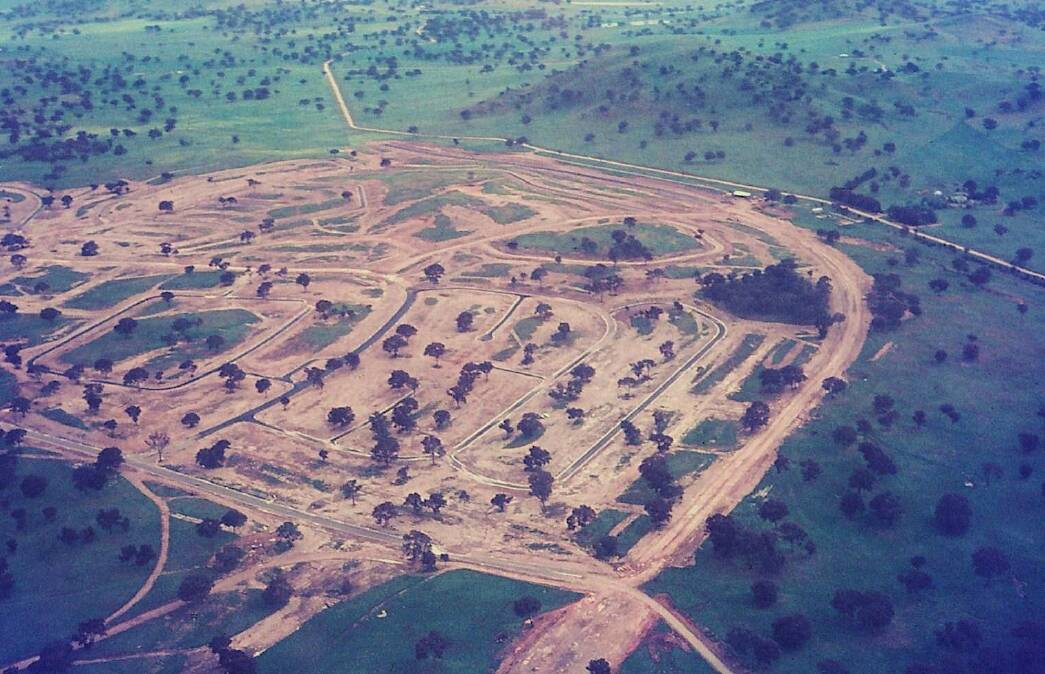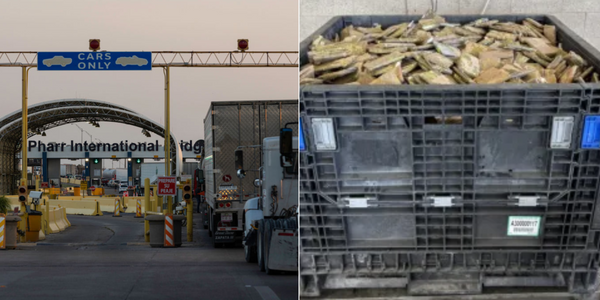It's near midnight and a cluster of curious paranormal enthusiasts are gathered in the darkened foyer of the National Film and Sound Archive building in Acton.
We are peering up at a bronze plaque emblazoned with the name of Sir Colin MacKenzie - he is the orthopaedist, comparative anatomist and philanthropist who was the driving force behind the Institute of Anatomy, the very reason this stripped classical sandstone landmark was built in Acton in the early 1930s.

MacKenzie was the institute's founding director and following his death in 1938, his ashes were interred in a niche in the wall behind the plaque.
Some who believe in things that go bump in the night claim MacKenzie is still here watching over his beloved building, in ghost form at least.

After sharing some of these hair-raising tales, I slowly read MacKenzie's Latin epitaph: "Si monumentum requiris, circumspice" which translates to "If you seek his monument, then look around you" - and request a minute's silence in his memory.
Suddenly the silence is interrupted by an eager participant. "Is it true MacKenzie's epitaph is the same as that on Sir Christopher Wren's tomb in St Paul's Cathedral in London?" he asks, expecting me to immediately respond, "Yes, of course."

After all, I'm the guide, I'm supposed to know these things, aren't I?
Well, in this case I don't.
Slightly embarrassed, a flurry of googling by my co-host reveals he is correct.

When you consider Wren was responsible for the rebuilding of 52 churches in London after The Great Fire of 1666, including what is widely regarded as his masterpiece, St Paul's Cathedral, you can understand why Wren's son chose such a fitting epitaph.
While it's uncertain whether MacKenzie chose his own epitaph, or as is suggested in his entry in the Australian Dictionary of Biography, his wife did; MacKenzie was integral in ensuring construction of the Acton building was completed despite the government tightening its purse strings during The Great Depression.

But there is another intriguing parallel between Wren and MacKenzie's final resting places and one I was also unaware of until I visited St Paul's during a recent trip to London. I was encouraged to visit the cathedral by Jeff Brownrigg, a Canberra-based cultural historian and author of a book on ghosts of the National Film and Sound Archive (NFSA).
Brownrigg has a close attachment with both buildings, having "been drawn to St Paul's" on several occasions, dating back to when he was a PhD student in York in the early 1970s. He later worked in the purportedly poltergeist-infested bowels of the NFSA building for two decades from the mid-1980s.

"When you get to St Paul's, do a 360-degree spin where Lady Diana and Prince Charles tied the knot in 1981 and look up at the magnificent dome and vaulted ceilings, it really is an incredible space," he urged.
He's right. Wow.
You really feel the ambience of St Paul's in that spin - no doubt doing exactly what Wren wanted visitors to do.

In comparison, if you stand in the foyer at the NFSA building and allow your gaze to extend beyond the death masks and low-relief sculptures of the heads of a dozen famous scientists that overlook MacKenzie's plaque and up to the impressive platypus skylight, you certainly get a similar, albeit less grandiose, sense of place.
But I'm not here to get dizzy, and after regaining my balance I make a beeline downstairs to the crypt, past a parade of tombs of other English luminaries including Lord Admiral Nelson (1806), to Wren's final resting place marked by a simple black slab and a wall tablet inscribed with that epitaph.

Next to Wren's tomb in a glass cabinet is small slither of timber accidentally broken off his coffin during the internment of Constantina Susan Burgoyne in 1851, but my eyes are drawn to the mask - with eyes firmly shut - sitting next to it. Unlike the death masks overlooking MacKenzie's final resting spot which are of his scientific heroes, the death mask watching sentinel over Wren's tomb is his own. Talk about spooky.

However, an even bigger revelation awaits me when I enter the adjoining thoughtfully curated exhibition Sir Christopher Wren: The Quest for Knowledge, staged to commemorate the 300th anniversary of Wren's death.
On display are all the expected items that highlight Wren's career as a revolutionary architect, mathematician and astronomer but in a side alley in the crypt's north aisle are a series of illuminated panels that chart his lesser-known achievements in physiology and ... anatomy.
These include an entire wall of Wren's intricate etchings of the human body and drawings of the nervous system for an authoritative textbook about the anatomy of the brain, Cerebri Anatome (1664), published by Thomas Willis who first coined the term "neurology".

Given MacKenzie was such a prominent comparative anatomist I can't help but think he would have been aware of Wren's interest in anatomy. Perhaps MacKenzie requested his own epitaph after all?
Before leaving St Paul's, I return to Wren's tomb to pay my respects one last time. A tour group is gathered around his plaque. As the guide begins to explain the meaning of the epitaph to her captive audience, I'm half tempted to interrupt and ask if she knows that it also appears on MacKenzie's commemorative plaque.
But I bite my tongue.
Are there tombs of other well-known Australians that bear the same epitaph? I'd love to know.
Landmark building with a colorful history
Sandstone Stronghold: The former Australian Institute of Anatomy building is often classified as art deco; however its official architectural style is "stripped classical" - a modernised style of ancient Greece and Rome. It is faced in Hawkesbury sandstone that was quarried on the NSW Central Coast and delivered to Canberra by train.

Many Motifs: Throughout the building are a range of motifs of Australian fauna and flora, including the platypus and koala. Due to its apparent links to birds, mammals and reptiles, in the 1920s the platypus was central to MacKenzie's study of comparative anatomy. The most spectacular platypus representation in the building is the Perspex skylight in the foyer. Meanwhile, intrigued by how they grasped overhead branches, MacKenzie dissected many koalas and used the findings of this research to treat shrapnel shoulder injuries and rehabilitate wounded soldiers when they returned from World War I.
Aussie Rules: MacKenzie believed "erect posture" was the basis of human intelligence and that Australians were unusually blessed in this regard, because "Australian Rules Football is more conducive to erect posture than any other game in the world". "It is founded on sound physiological lines and has been no small factor in the physical development of our nation," he argued.
Morbid Matters: In 1974 senior staff at the Institute of Anatomy temporarily removed MacKenzie's commemorative plaque to check his ashes were still where they were interred in 1938.
Beyond the grave: Jeff Brownrigg's tell-all book Heaven, Earth and Canberra: Shakespeare and the Ghosts of Australia's National Film and Sound Archive (Ginninderra Press, 2021) is available at the National Library of Australia bookshop, Dymocks Belconnen or online from Ginninderra Press.
Did You Know? In the 1920s, MacKenzie leased land at Healesville in Victoria to accommodate his live specimens at what later became the Healesville Sanctuary.
WHERE IN CANBERRA?

Rating: Medium
Clue: A suburb south of the lake under construction in 1969, but which one?
How to enter: Email your guess along with your name and address to tym@iinet.net.au. The first correct email sent after 10am, Saturday November 11 wins a double pass to Dendy, the Home of Quality Cinema.

Last week: Congratulations to Patricia Hagan of Chapman who was first to identify last week's photo as the waterfall in Commonwealth Park near the chess board, across the road from the intersection of Anzac Parade and Parkes Way. It was the first week in over 12 months that more incorrect entries were received than correct ones, with many readers thinking it was the similar man-made waterfall at John Knight Memorial Park at Lake Ginninderra in Belconnen or even further afield, the natural cascades at Numerella.
"When I was at university in the 1970s it was always flowing and a lovely place to stop if you were walking or cycling," reports Sue O'Leary who submitted the photo. "There was a couple who were just as amazed as me to see it flowing again," reports Sue. "They thought it hadn't been flowing for 30 years at least."
While I'm not sure just how long it was out of operation, the photo brought back fond memories for many readers including John Burge of Curtin who "used to take his children to play at the waterfall when they were very young". Meanwhile, Maryanne Larkin also recalls walking her children "through the tunnel underpass to reach it ... they loved climbing and playing on the rocks near the waterfall."
According to a spokesperson for the National Capital Authority (NCA) which has responsibility for its maintenance, the group has worked to enhance the area surrounding the Nerang Pool Waterfall over the past year.
"We have recently achieved significant progress in this space, which includes servicing the essential infrastructure and conducting maintenance work to clear vegetation and clean the water intake filter," my NCA insider reports. "While there are still ongoing tasks to be completed, our goal is to wrap them up by the end of the calendar year."
Note: During the current testing phase, the waterfall will operate intermittently until the NCA is "satisfied with its performance and can fully reinstate regular operation".
SIMULACRA CORNER

Earlier this year I pledged to publish more rocky resemblances from Markus Buchhorn's property in the Tinderry Mountains just to the south-east of the ACT. Today, I partly deliver on that promise. You can "see" the seal playing with the ball, can't you?
CONTACT TIM: Email: tym@iinet.net.au or Twitter: @TimYowie or write c/- The Canberra Times, GPO Box 606, Civic, ACT, 2601
We've made it a whole lot easier for you to have your say. Our new comment platform requires only one log-in to access articles and to join the discussion on The Canberra Times website. Find out how to register so you can enjoy civil, friendly and engaging discussions. See our moderation policy here.







